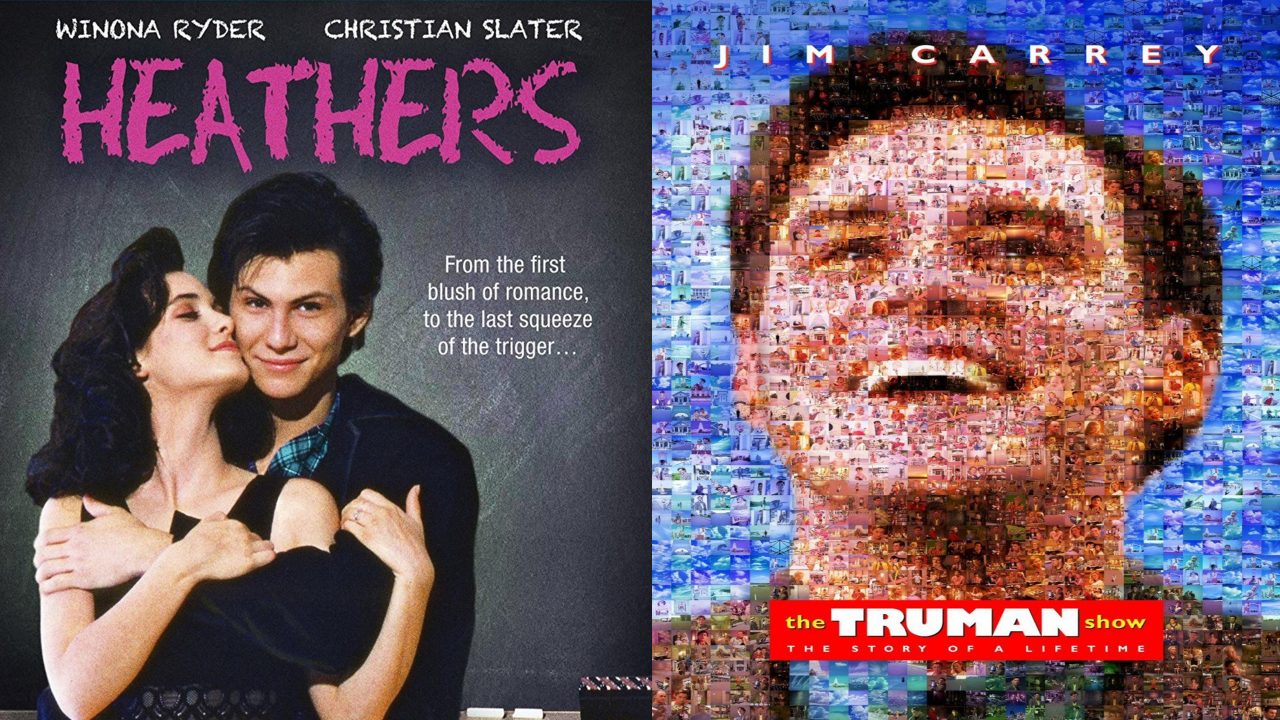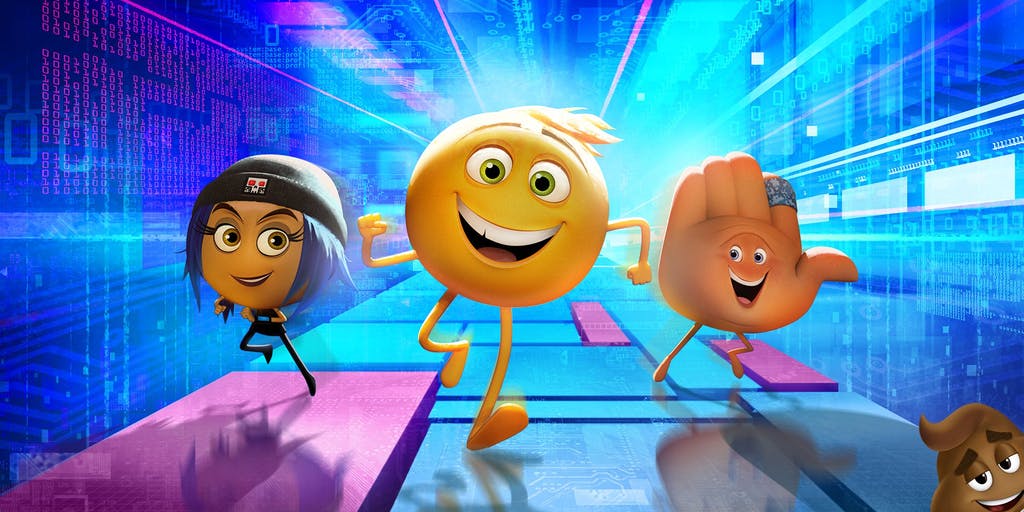In my experience, black comedy is edgy by nature. Since the most common theme I’ve seen explored in the genre is death, I’m not surprised what makes black comedies so unique for me is how they force me to laugh at things I wouldn’t laugh at otherwise while still being in good taste. I watched the films “Heathers” (1988) and “The Truman Show” (1998) back-to-back in order to catch up on some highlights of the genre, and found another element it experiments with to great effect: the expectations we have of a film based on the age of the main characters. I only knew the basics about the protagonists of both of these films, so the dissonance between its subject matter and its treatment of said subject blindsided me so much I had to write about it.
All I knew about “Heathers” was that it was about the most popular (and mean) girls at school. This is a a well-trodden premise, and I was worried at the beginning when the basic high school stock characters were established that the film would be a straight-forward high school drama. And yet something feels off; the characters of the movie are more cruel and crass when dealing with sensitive issues than I can ever remember seeing when I was in high school. I found it hard to believe that even in the 1980s young people could be so nasty. Then, the film hits a turning point when the least-mean popular girl Veronica (Winona Ryder, “Stranger Things”) tries to do the Heathers’ bidding by talking to the mysterious JD (Christian Slater, “Mr. Robot”), who has been watching and smiling at her from a corner of the cafeteria while the Heathers wreak havoc all of lunch. At this point I got worried. Another high school romance? But then the movie shows its true colors.

JD gets harassed and called a “fag” by jocks because one of the most popular girls in school just talked to him, a prime example of the absurd logic bullies use to target others. He in turn brandishes a gun out of nowhere and shoots them (with what we later learn are blanks). What?
This scene is a prime example of the unique power of black comedy by being subservive on two levels. For one, suburbia is known for having low crime-rates, which makes them appealing to move to in the first place. This establishes the magnitude of how dangerous JD is to this community from the very first time we see him, and it is both fricking hilarious and fricking horrifying at the same time. But on a broader level, this disrupts our expectations of what a high school movie is like. It is a good introduction of the very dark and twisted view of high school presented in “Heathers”. I had zero idea the film is rated R, but I wish I had.
I had the complete opposite emotional reaction when watching “The Truman Show”. It is unexpectedly sweet and tender at its core, following 30 year-old Truman Burbank (Jim Carrey, “Bruce Almighty”) on a quest to find his high school crush who he loved but had whisked away, as he realizes something is very off about his hometown. I did not expect such a touching driving force for a movie about a man who is the star of a crazy successful reality TV show with everyone knowing it but him.
One of the darkest aspects to the film, in my opinion, is the idea that we do not really know the intentions of other people because we do not know what we do not know. It made me sad to think that Truman, who is kind, has intimate relationships with those he considers loved ones that are actually all actors. A notable example is when his closest friend Marlon (Noah Emmerich, “The Americans”) holds back tears after Truman says he is his best friend. I felt that.
After seeing that Jim Carrey was the lead and that the film was about a 24/7 reality TV show, I was concerned that “The Truman Show” would take a turn for the grotesque regarding sexuality and violence. Yet surprisingly, there is not any sex or violence. When Truman’s sexuality is addressed, it is to show how artificial his marriage to his wife Meryl (Laura Linney, “Sully”) is. When Truman is shown to have a habit of buying ambiguous magazines “for the wife”, I assumed it was porn. But instead, the magazines are shown to be full of close-ups of women’s faces, which he uses to construct a portrait of his love interest in high school whom he still misses dearly after so many years. It is sweet and shows a pure and romantic side to Truman that makes him a very sympathetic hero.

In contrast, his relationship with his wife Meryl is dull and full of repetition, with scenes of them together focused on mundane daily marital life like saying goodbye before going to work or uniting at the end of the day. The fact Meryl is only acting like his wife is palpable, but she never misses a beat despite her regular advertising of sponsors’ products. But the injustice that Truman faces by having everything he knows be fiction is brought to the forefront when he finally confronts Meryl that something is very fake about their city and that he must go follow his dreams of travelling. She becomes visibly panicked, no doubt well-aware of all the anti-travel messaging he received to keep him on set, and tries to dismiss his ideas. And out of nowhere she pulls out hot cocoa and offers to make him some as she advertises the specific brand. While it is funny that she would stick to the script at such an inopportune time, it is also very depressing to see how she and all the other actors on the show value their professional relationships with Truman over their personal relationships with him. This makes his genuine, albeit short-lived connection with his love interest Lauren (Natascha McElhone, “Californication”) so charming. They are able to recognize their chemistry in spite of all the obstacles between them, making the movie a lot more heart-warming and fairytale-like than I anticipated.
When I found out the film was rated PG, everything clicked into place. The 1950s-inspired clothes and decor lent a sense of authenticity to the sanitized world that is supported by sponsors and the average Joe watching. I’m glad I didn’t know that, however, so I could feel firsthand how disarming it was for Truman to take to heart the idyllic artificial life his show’s creator Christof (Ed Harris, “Mother!”) made in an effort to shield him from the real world’s horrors. I would have expected the family-friendly PG rating to detract, not enhance the movie centered on the unfiltered human experience. And yet by showing how unnatural it would be to live in a world that is monitored and approved by the masses, the plot rises from science fiction thought experiment to social commentary, with a lot of heart added to the mix.
In conclusion, I found it very refreshing to see age groups redefined in “Heathers” and “The Truman Show” through the use of comedy. The movies take the stereotypes of the teenage bad boy and the wholesome adult everyman to extremes, which lends itself perfectly to critique the societal norms that allow these figures to emerge in the first place in an original and memorable way.














